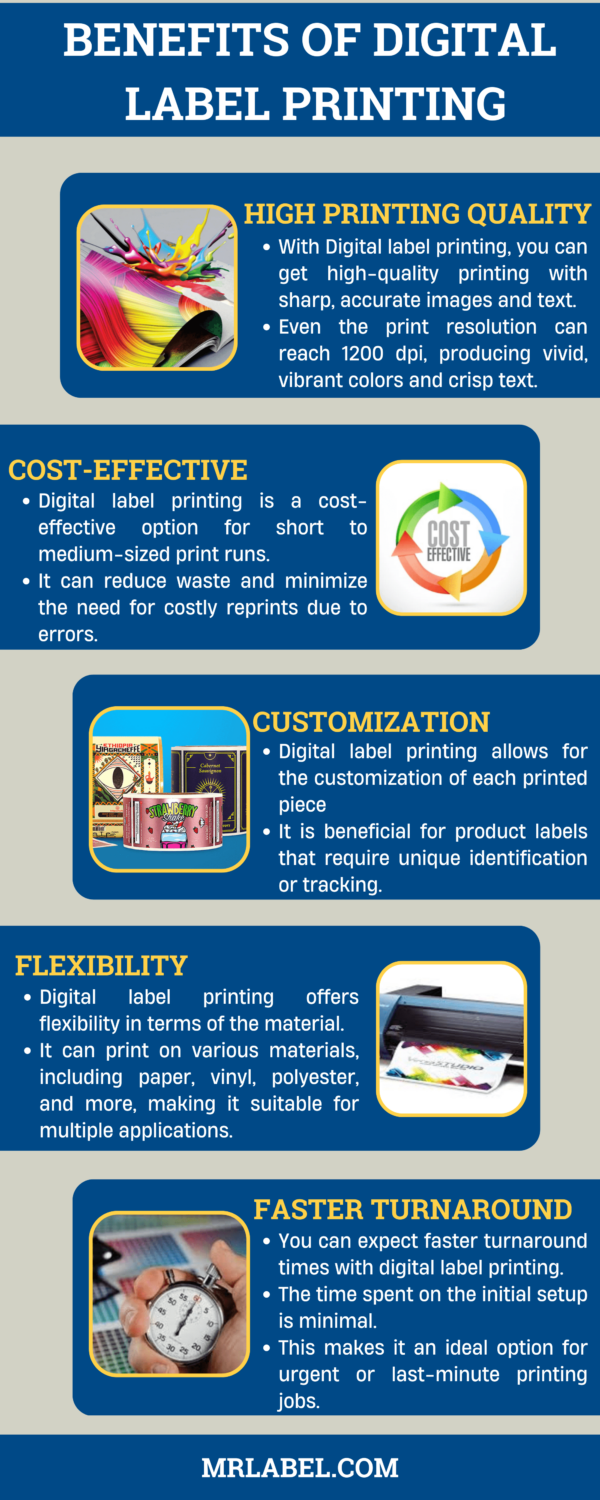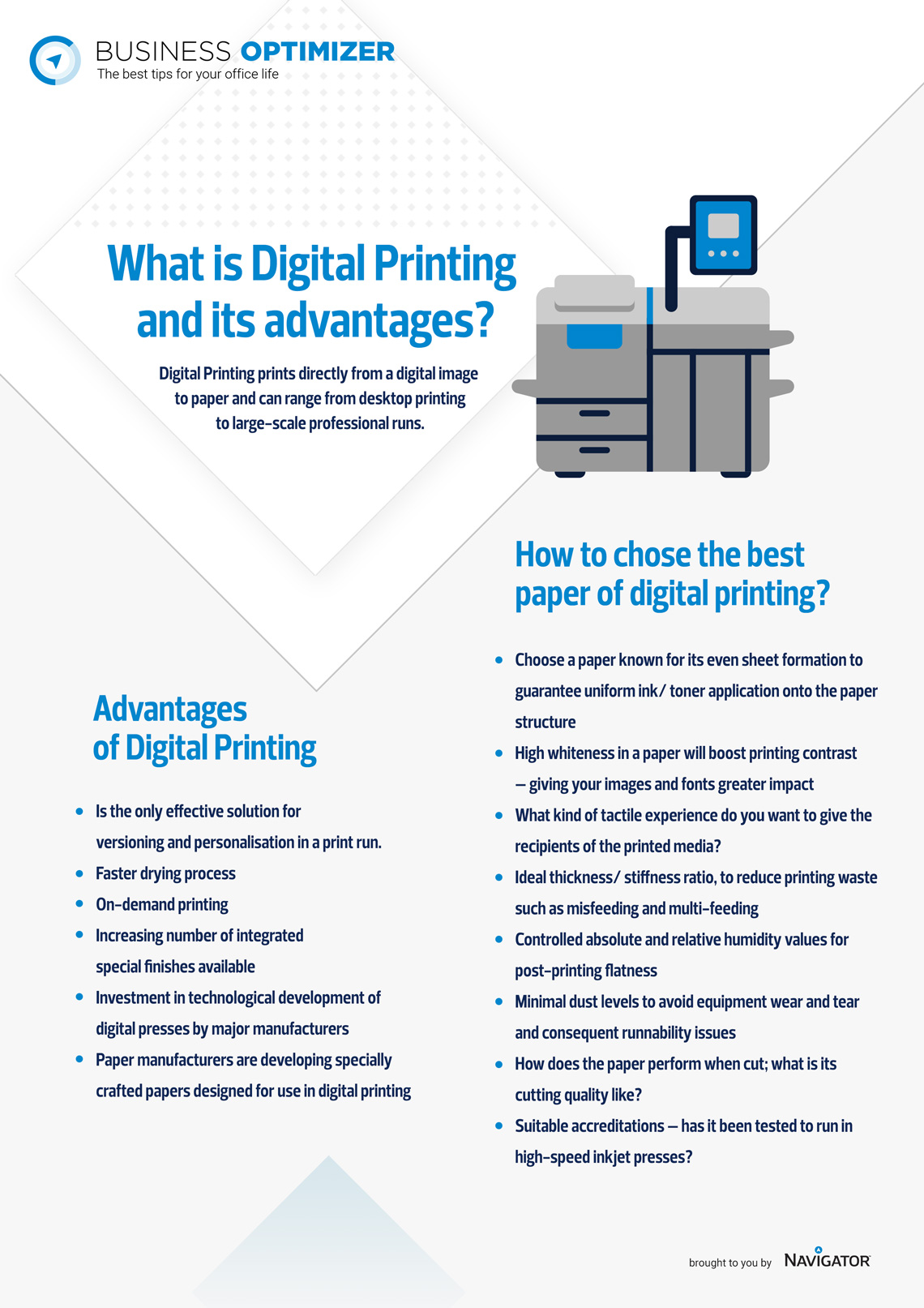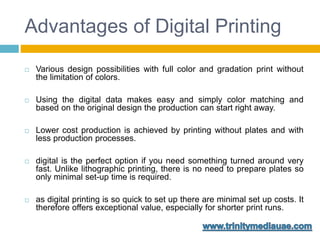The Ultimate Guide To Digital Printing
The Ultimate Guide To Digital Printing
Blog Article
Some Known Factual Statements About Digital Printing
Table of ContentsAn Unbiased View of Digital PrintingHow Digital Printing can Save You Time, Stress, and Money.The Only Guide to Digital PrintingGetting The Digital Printing To WorkWhat Does Digital Printing Mean?Some Of Digital Printing
Variable information printing, such as direct mail with customized codes and addresses, is ideally fit for digital printing. Digital fast printing only needs 4 steps of layout, evaluation, printing and binding to get every little thing done. Digital quick printing has an exceptional advantage: print on need.According to PMMI, digital printing permits brand names and suppliers to respond rapidly to client needs while enhancing the supply chain, lowering warehousing cost and waste, and appreciating faster time to market. That all sounds terrific, however just how does this modern technology do all that? The significant differentiator of these technologies is that there are no set-up charges and no plates with digital printing.
An Unbiased View of Digital Printing
According to Wikipedia, the biggest distinction between digital printing and conventional techniques such as lithography, flexography, gravure, or letterpress - Digital Printing is that there is no requirement to change printing plates in digital printing, whereas in these analog printing techniques the plates are repetitively replaced. This causes quicker turnaround time and lowers cost when using electronic printing.
Rapid manufacturing suggests getting your product to market much faster. It likewise implies it's simpler and faster to make adjustments in the future, when you change a dish, add a SKU, or develop seasonal packaging. Digital printing is very versatile, so it's very easy to make modifications to the package style quickly. All of it goes back to home plates.
A lot more inventory can indicate more waste down the roadway. With standard printing techniques, short-run printing is simply not possible. Since an excellent layout can make or damage your item, digital printing continually creates high-grade, clear and colorful graphics each time. Digital printing on versatile bags adds the brilliant, vivid, and accurate graphics that virtually bid consumers to connect and touch them.
Digital printing is the procedure of printing digital-based photos directly onto a variety of media substrates. There is no requirement for a printing plate, unlike with countered printing. Digital documents such as PDFs or desktop publishing data can be sent out straight to the electronic printing machine to print on paper, photo paper, canvas, material, synthetics, cardstock and other substratums.
The 7-Minute Rule for Digital Printing
According to PMMI, electronic printing enables brands and producers to respond quickly to consumer needs while enhancing the supply chain, minimizing warehousing expense and waste, and taking pleasure in faster time to market. That all noises terrific, however how does this technology do all that? The significant differentiator of these innovations is that there are no set-up fees and no plates with electronic printing.
This results in quicker turnaround time and reduces cost when making use of digital printing.

Rumored Buzz on Digital Printing
With traditional printing approaches, short-run printing is simply not feasible. Because a terrific style can make or break your item, digital printing constantly develops premium, clear and vivid graphics each time.

According to PMMI, digital printing enables brand names and manufacturers to respond promptly to customer needs while boosting the supply chain, decreasing warehousing expense and waste, and enjoying faster time to market. That all noises wonderful, but exactly how does this modern technology do all that? The major differentiator of these technologies is that there are no set up try this site costs and no plates with electronic printing.
Digital Printing Can Be Fun For Anyone
According to Wikipedia, the best difference between digital printing and conventional techniques such as lithography, flexography, gravure, or letterpress is that there is no requirement to change printing plates in electronic printing, whereas in these analog printing techniques home plates are repetitively changed. This causes quicker turnaround time and lowers expense when utilizing electronic printing.
Digital printing is very versatile, so it's simple to make changes to the package layout promptly. It all goes back to the check my reference plates.

The Single Strategy To Use For Digital Printing
Digital printing is the process of printing digital-based photos directly onto a selection of media substrates. There is no need for a printing plate, unlike with balanced out printing. Digital files such as PDFs or desktop computer publishing data can be sent out directly to the electronic printing press to publish on paper, picture paper, canvas, textile, synthetics, cardstock and other substratums.
Report this page